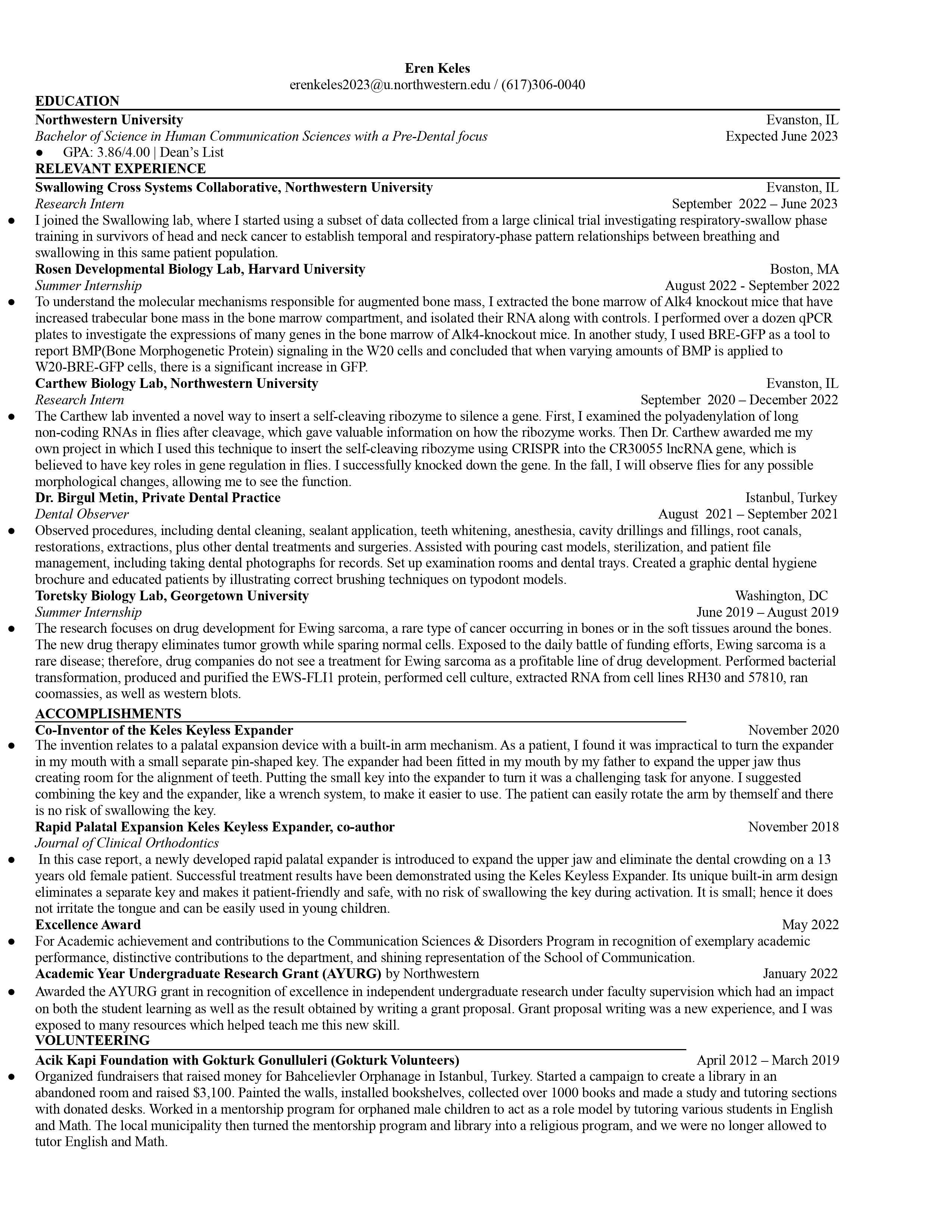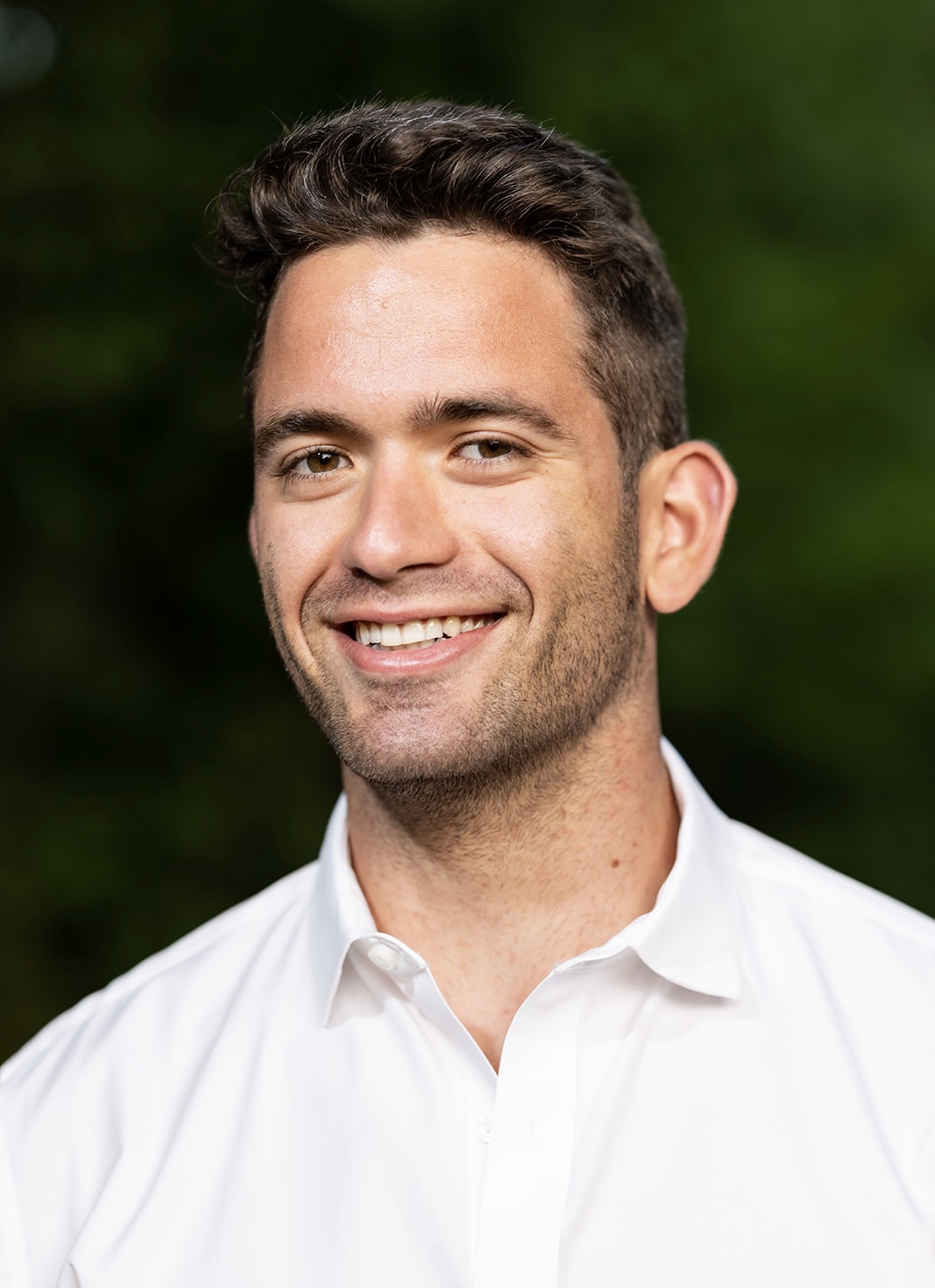As a member of the Harvard Innovation Lab in the propel stage, my venture, the Keles Keyless Expander (KKE), is on its way towards market launch.
The KKE stands as a unique solution within the realm of palatal expanders, offering an integrated activation arm that addresses common issues found in traditional expanders.
Our product eliminates concerns such as the loss or ingestion of the key, and ensures easy activation, leading to swift results with minimal patient compliance. The compact size of the KKE guarantees comfort for a diverse patient demographic, while its secure design prevents detachment after the final turn, ensuring a seamless and effective treatment process. With the ability to be placed deeper in the palate, the KKE ensures true palatal separation with minimal dental tipping. Additionally, it promotes a significant increase in airflow by opening the nasopharynx by approximately 21%, leading to improved patient comfort and better overall treatment outcomes.
Through the Harvard Innovation Lab, we have been actively engaging with experts in the field and have made our own network. Being a part of this community has been pivotal in propelling our venture forward in the entrepreneurial journey.
About Me
Research, Design, and Innovate
Hello, I am Eren Keles.
i serve as the CEO and Co-Founder of Aegis Star a dental device company. We're excited to soon introduce the Keles Keyless Expander, a pioneering product I co-invented. Concurrently, I am a clinician in training at the Harvard School of Dental Medicine. I completed my Bachelor of Science at Northwestern University, where I majored in Human Communication Sciences and obtained the Segal Design Certificate. My dedication to research, dentistry, and innovation has been recognized, earning me a spot among the 25 Most Successful 2023 Turkish Graduates in America. My journey has taken me through numerous biology research labs and dental offices, and my passion for dentistry and innovation continues to drive my professional career.
I am a year-one student attending graduate school at Harvard School of Dental Medicine. I am a Northwestern University alumni, where I majored in Human Communication Sciences and obtained the Segal Design Certificate. I am passionate about research, dentistry, and innovation. I have worked in numerous biology research labs and dental offices. I co-invented a patented dental device. The experience of developing a patent, the Keles Keyless Expander, has given me problem-solving skills and allowed me to apply the human-centered design philosophy. I like to work in an interdisciplinary manner. I believe that hands-on biology research will steer how clinical work is conducted in a dental chair. I also believe that feedback from patients and doctors will aid in identifying current problems, which will translate into innovations. In my free time, I enjoy weightlifting, rowing, spearfishing, and soccer.
Skills:
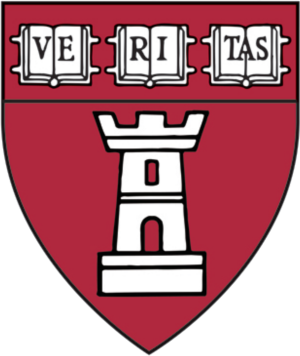

Keles Keyless Expander
The idea behind the invention
The Keles Keyless Expander (KKE) relates to a palatal expansion device with a built-in arm mechanism. As a patient, I found it impractical to turn the expander in my mouth with a small separate pin-shaped key. The expander had been fitted in my mouth by my father to expand the upper jaw, thus creating room for the alignment of teeth. Putting the small key into the expander to turn it is a challenging task for anyone. I led the design implementation of combining the key and the expander, like a wrench system, to make it easier to use.
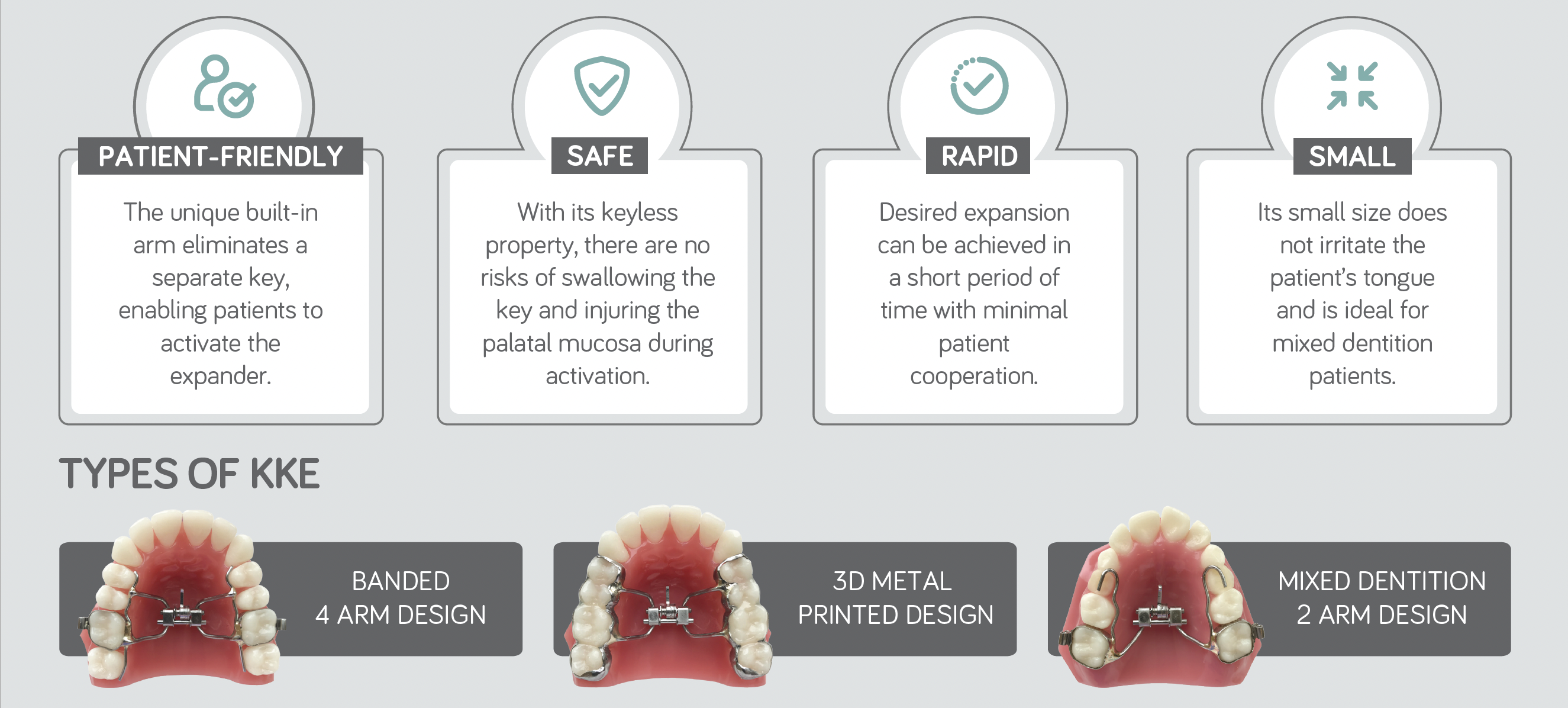
Benefits of the KKE
With the keyless property, it’s also much safer than the traditional Hyrax screws. There is no risk of swallowing the key or injuring the palatal mucosa during activation. Desired expansion can be achieved in a short period of time with minimal patient cooperation. Its small size avoids irritating the patient's tongue, making it ideal for mixed dentition patients. With the expanders in the market today, to turn the key, one must lie down, widely open their mouth, have a good light source to locate the hole, and make sure there is no food debris that would prevent the person assisting from placing the key in the hole to turn it. Furthermore, if the user fails to make a complete turn of the screw with the key, the next hole will not appear. The keyless property eliminates these difficulties. Additionally, the Keyless expander can be incorporated with the digitally designed 3D metal printed framework and can also be used effectively with bone-anchored mini screws in adolescents as a hybrid expander. In other words, it can be used in a wide spectrum of age groups.

Harvard Innovation Lab
Research

Harvard School of Dental Medicine
Rosen Laboratory
Visiting Undergraduate Research Fellow
07-25-2022/09-16-2022
Boston, MA
To understand the molecular mechanisms responsible for augmented bone mass, I extracted
the bone marrow of Alk4 knockout mice that have increased trabecular bone mass in the
bone marrow compartment and isolated their RNA along with controls. I performed over a
dozen qPCR plates to investigate the expressions of many genes in the bone marrow of Alk4-
knockout mice. In another study, I used BRE-GFP as a tool to report BMP (Bone
Morphogenetic Protein) signaling in the W20 cells and concluded that when varying amounts
of BMP is applied to W20-BRE-GFP cells, there is a significant increase in GFP.
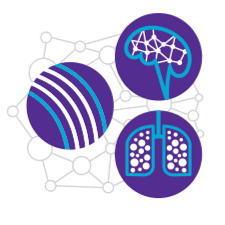
Northwestern University
Swallowing Cross-Systems Collaborative
Undergraduate Research Volunteer
09-30-2022/06-12-2023
Evanston, IL
In the Swallowing lab, I used a subset of data collected from a large clinical trial investigating
respiratory-swallow phase training in survivors of head and neck cancer to establish
temporal and respiratory-phase pattern relationships between breathing and swallowing in
this same patient population.

Northwestern University
Carthew Laboratory
Undergraduate Research Assistant
09-28-2020/06-12-2023
Evanston, IL
The Carthew lab invented a novel way to insert a self-cleaving ribozyme to silence a gene.
First, I examined the polyadenylation of long non-coding RNAs in flies after cleavage, which
gave valuable information on how the ribozyme works. Then Dr. Carthew awarded me my own
project in which I used this technique to insert the self-cleaving ribozyme using CRISPR into
the CR30055 lncRNA gene, which is believed to have key roles in gene regulation in flies. I
successfully knocked down the gene by 95% in the 3’ region.
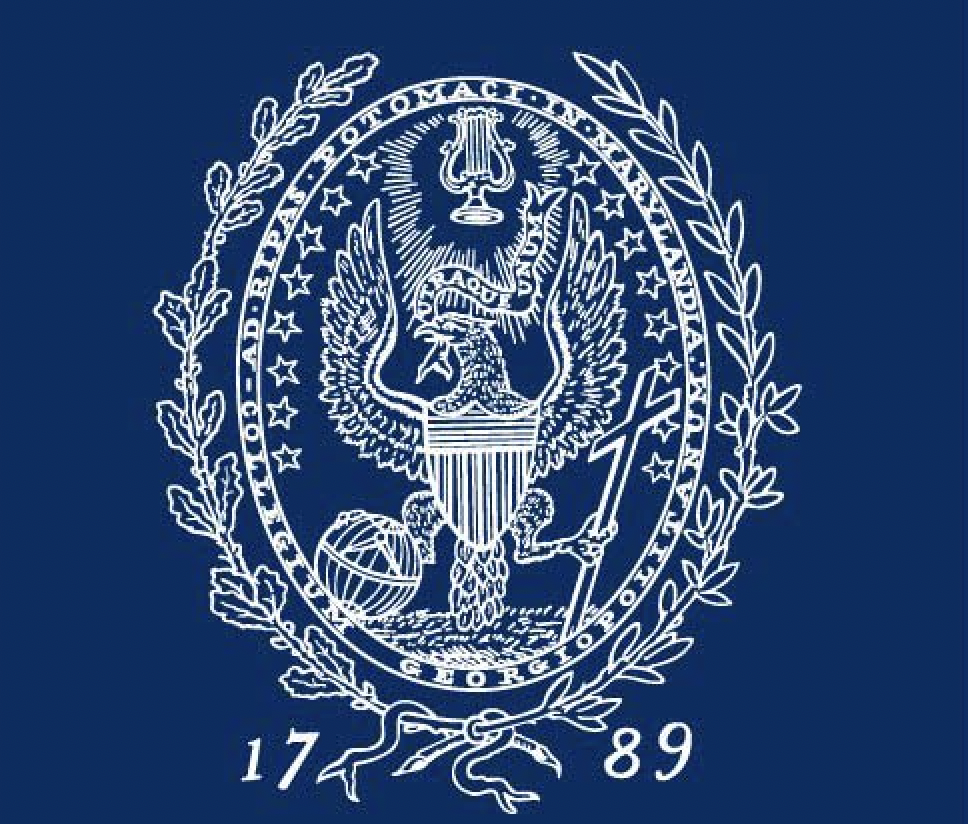
Georgetown University
Toretsky Laboratory
Research Intern
06-10-2019/08-23-2019
Washington, DC
The research focuses on drug development for Ewing sarcoma, a rare type of cancer
occurring in bones or in the soft tissues around the bones. The new drug therapy eliminates
tumor growth while sparing normal cells. Exposed to the daily battle of funding efforts, Ewing
sarcoma is a rare disease; therefore, drug companies do not see a treatment for Ewing
sarcoma as a profitable line of drug development. Performed bacterial transformation,
produced and purified the EWS-FLI1 protein, performed cell culture, extracted RNA from cell
lines RH30 and 57810, ran coomassies, as well as western blots.
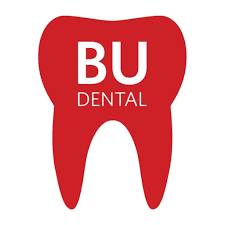
Boston University Goldman School of Dental Medicine
Kukurizinska Laboratory
Research Intern
09-10-2018/03-08-2019
Boston, MA
I researched the beta-catenin pathway in oral squamous cell carcinoma cancer using the 4-NQO Model. Additionally, I performed immunostained tissue sections, hematoxylin and eosin stain, immunofluorescence on slides, and analyzed data for mice with Oral Squamous Cell Carcinoma exposed to tobacco, alcohol, and/or HPV16 using the Zeiss 710 confocal microscope. I was also able to investigate the impact of carcinogens on mice. The above factors deteriorated the health of the mice in the ways these carcinogens are expected to have similar effects in humans, which allowed me to observe and apply this knowledge.

Harvard School of Dental Medicine
Rosen Laboratory
Research Intern
06-11-2018/08-17-2018
Boston, MA
I researched the roles of Bone Morphogenetic Proteins (BMPs) in musculoskeletal tissues. I genotyped mice tail DNA using Polymerase Chain Reaction (PCR), performed histology, immunohistochemistry, in situ hybridization, and cell culture using different amounts of antibiotics. I was able to gain insight into how tissue repair and regeneration occur both in mice and also in vitro. This experience allowed me to develop the skills necessary to perform experiments and interpret the results.
Shadowing
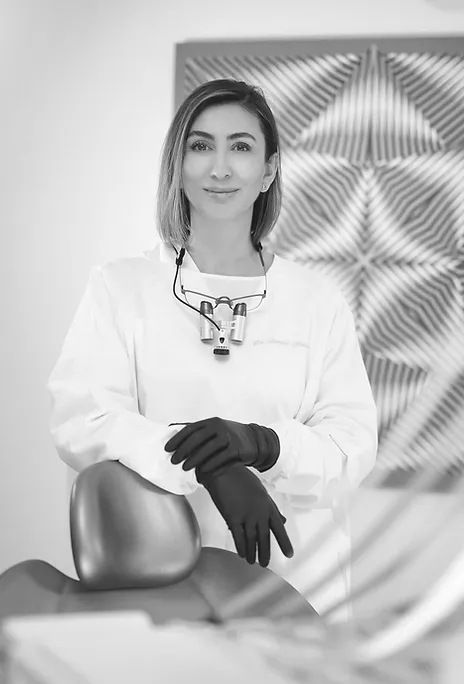
Dr. Birgul Tumay
Dental Observer, 08-02-2021/09-17-2021
Istanbul, Turkey
I observed procedures, including dental cleaning, sealant application, teeth whitening, anesthesia, cavity drillings and fillings, root canals, restorations, extractions, plus other dental treatments and surgeries. I also assisted with pouring cast models, sterilization, and patient file management, including taking dental photographs for records. I set up examination rooms and dental trays, as well as created a graphic dental hygiene brochure, and educated patients by illustrating correct brushing techniques on typodont models.
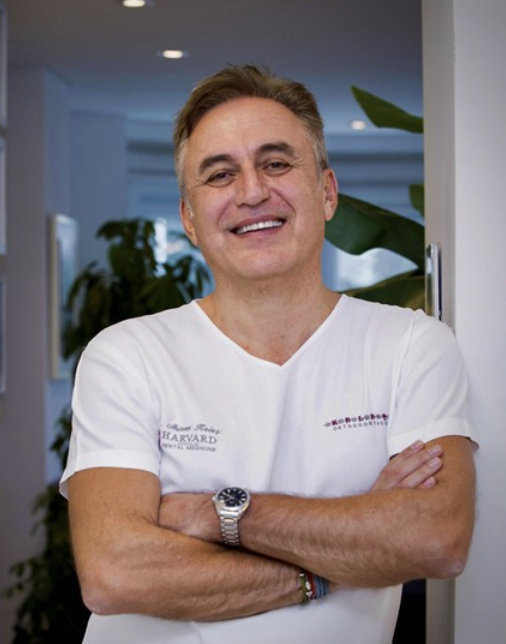
Keles Orthodontics
Dental Observer, 04-02-2020/02-10-2021
Istanbul, Turkey
I observed bracket bonding, wire changing, retainer fabrication, and adjusting orthodontic appliances. I prepared impression materials, poured and trimmed dental models, practiced wire bending, introduced to the 3D intraoral scanner, 3D printing, clear aligners, and wire bending robot. I also observed diagnosis and treatment planning of patients. Moreover, I acted as the liaison between the manufacturers, engineers, graphic designers, and the doctor in the redesign of the Keles Keyless Expander during the stages of design, testing, and usability evaluation.
Volunteering
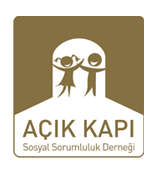
Acik Kapi Foundation
04-27-2012/03-22-2019
Istanbul, Turkey
I organized fundraisers that raised money for Bahcelievler Orphanage in Istanbul, Turkey. I started a campaign to create a library in an abandoned room and raised $3,100. I painted the walls, installed bookshelves, collected over 1000 books, and made study and tutoring sections with donated desks. I also worked in a mentorship program for orphaned male children to act as a role model by tutoring various students in English and Math until the program was shut down.
Publications

Rapid Palatal Expansion with the Keles Keyless Expander
Journal of Clinical Orthodontics
Co-author, 11-01-2018
In this case report, a newly developed rapid palatal expander is introduced to expand the upper jaw and eliminate the dental crowding on a 13 years old female patient. Successful treatment results have been demonstrated using the Keles Keyless Expander. Its unique built-in arm design eliminates a separate key and makes it patient-friendly and safe, with no risk of swallowing the key during activation. It is small; hence it does not irritate the tongue and can be easily used in young children.
Awards
-
02/2024
- Finalist for the Sloan Healthcare Innovations Prize
Massachusetts Institute of Technology (MIT)
The Keles Keyless Expander was selected as a finalist from over 80 startup teams for the MIT Sloan Healthcare Innovations Prize, which is a pitch competition open to entrepreneurs innovating in the healthcare space. The mission of SHIP is to support early stage healthcare startups by providing feedback from, and opportunity to network with, experienced industry professionals. -
07/2023
- 25 Most Successful 2023 Turkish Graduates in America
Study in America
Selected as one of the 25 most successful 2023 graduates were chosen based on a comprehensive evaluation that considered not only their academic excellence but also their exceptional leadership abilities. These graduates distinguished themselves by achieving top ranks in their classes and earning a minimum GPA of 3.7, along with receiving prestigious Summa or Magna Cum Laude Honor awards upon graduation. Moreover, they demonstrated maturity beyond their years through impactful voluntary work for the community and valuable job experiences. -
05/2023
- Excellence Award
Northwestern University
For Academic achievement and contributions to the Communication Sciences & Disorders Program in recognition of exemplary academic performance, distinctive contributions to the department, and shining representation of the School of Communication. -
05/2022
- Excellence Award
Northwestern University
For Academic achievement and contributions to the Communication Sciences & Disorders Program in recognition of exemplary academic performance, distinctive contributions to the department, and shining representation of the School of Communication. -
05/2022
- Wildcat Impact Award
Northwestern University
The Wildcat Impact Awards recognized NSSLHA for significantly contributing to improving the quality of student life at Northwestern. We demonstrated Student Affairs values and behaviors to create a more engaged and inclusive campus community. We achieved this through specific contributions to, and involvement in, campus activities, academic initiatives, student governance, community service, leadership, and pursuits to support and empower our fellow peers. -
01/2022
- Academic Year Undergraduate Research Grant (AYURG)
Northwestern University
Awarded the AYURG grant in recognition of excellence in independent undergraduate research under faculty supervision which had an impact on both the student learning as well as the result obtained by writing a grant proposal. Grant proposal writing was a new experience, and I was exposed to many resources which helped teach me this new skill.
Resume
